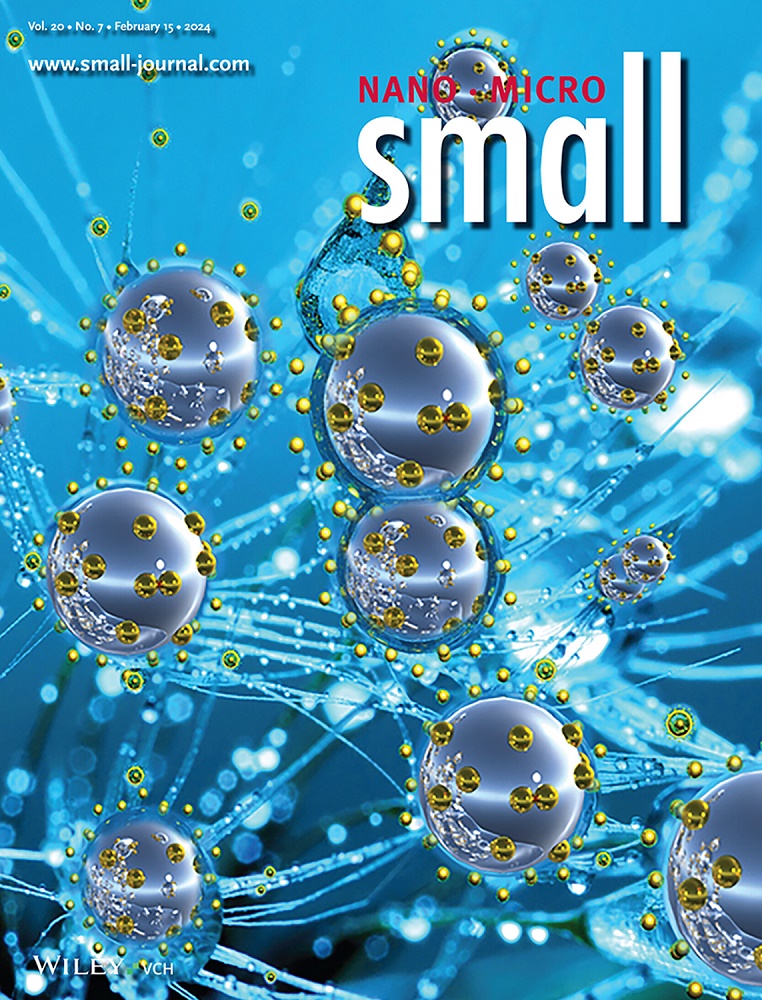Interfacial Linkage Engineering Inducted Directional Electron Transfer Over ZnIn2S4@BiOCl S-Scheme Heterojunctions for CO2 Photoreduction and Tetracycline Decomposition
IF 12.1
2区 材料科学
Q1 CHEMISTRY, MULTIDISCIPLINARY
引用次数: 0
Abstract
The rational design of ZnIn2S4@BiOCl (ZIS@BiOCl) S-scheme heterojunctions through interfacial In─O linkage creates smooth directional carrier channels, significantly enhancing charge transfer and separation. Density functional theory (DFT) simulations and experimental characterizations confirm that the strong built-in electric field and interfacial In─O coupling synergistically promote charge migration. The optimized 3% ZIS@BiOCl composite demonstrates exceptional photocatalytic activity, achieving CO and CH4 production rates of 1132.63 and 17.47 µmol g−1 h−1, respectively, along with an 83.1% tetracycline (TC) degradation efficiency. In situ FTIR spectroscopy reveals the CO2 reduction pathway to CO/CH4, while LC-MS analysis identifies TC degradation intermediates. This work provides atomic-level insights for designing efficient S-scheme photocatalysts for simultaneous CO2 reduction and pollutant degradation.

链接工程诱导定向电子转移在ZnIn2S4@BiOCl S-Scheme异质结上的CO2光还原和四环素分解
通过界面In─O连接合理设计ZnIn2S4@BiOCl (ZIS@BiOCl) S-scheme异质结,创造了平滑的定向载流子通道,显著增强了电荷转移和分离。密度泛函理论(DFT)模拟和实验表征证实了强内嵌电场和界面In─O耦合协同促进电荷迁移。优化后的3% ZIS@BiOCl复合材料具有优异的光催化活性,CO和CH4的产率分别为1132.63和17.47µmol g−1 h−1,四环素(TC)的降解效率为83.1%。原位FTIR光谱揭示了CO2还原为CO/CH4的途径,LC-MS分析确定了TC降解中间体。这项工作为设计高效的s -方案光催化剂同时减少二氧化碳和污染物降解提供了原子水平的见解。
本文章由计算机程序翻译,如有差异,请以英文原文为准。
求助全文
约1分钟内获得全文
求助全文
来源期刊

Small
工程技术-材料科学:综合
CiteScore
17.70
自引率
3.80%
发文量
1830
审稿时长
2.1 months
期刊介绍:
Small serves as an exceptional platform for both experimental and theoretical studies in fundamental and applied interdisciplinary research at the nano- and microscale. The journal offers a compelling mix of peer-reviewed Research Articles, Reviews, Perspectives, and Comments.
With a remarkable 2022 Journal Impact Factor of 13.3 (Journal Citation Reports from Clarivate Analytics, 2023), Small remains among the top multidisciplinary journals, covering a wide range of topics at the interface of materials science, chemistry, physics, engineering, medicine, and biology.
Small's readership includes biochemists, biologists, biomedical scientists, chemists, engineers, information technologists, materials scientists, physicists, and theoreticians alike.
 求助内容:
求助内容: 应助结果提醒方式:
应助结果提醒方式:


